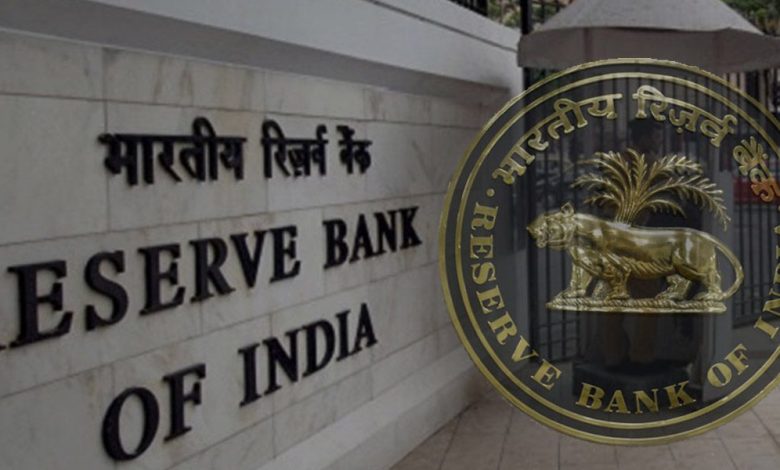Removal of Rs 2,000 Notes – A Surgical Strike On Black Money
Removing Rs. 2000 Notes from system is part of RBI's Clean Note Policy too, opines Vaibhav Agarwal, Chairman, Yuva India Foundation

OPINION PIECE
- 20,000 Exchange of cash in one go – reason – because everyone is to be catered
- Check on Spurious Currency if any
- Is legal Tender in line with the existing and past policy of Government of India – the life span of the Rs 2000 note is 5 years
- A political strike in its own manner
- A Surgical Strike on Black money
- Terror Funding
Bang Bang – A surgical strike that reminds us all of the First targeted hit on Black-money and terror funding on November 8 th 2016 – yet again on Friday the 19th May, 2023 RBI issued a public Announcement at 9PM stating that Rs.2000 currency notes are withdrawn, will be out of the circulation by the 30th of September, 2023 – exchange of notes to be effected immediately.
Opposition parties – against the Center Government peddled a narrative against the incumbent government confusing people and reminding them of, playing with words and terming this as “Notebandi” – reminding of the horrors they faced in 2016 in the past.
Unfortunately, since the people at large, have little time to understand this in detail, plays straight in the hands of many unscrupulous elements who are fear-mongering, survive and feed their political ambitions on creating social fear, anguish and rush. Not withstanding the fact that these same urban naxals are the ones who will lose the most in this 2000 rupee note exchange / withdrawal drive.
The general public, as a matter of fact, have been very wise with the changing economic environment in India and have decently, and swiftly already moved to the digital forms of payment exchange and are using various easy to use money payment and receipt formats such as UPI, IMPS, RTGS, MMID, Payment Gateways, Rupay et all. Indeed, we realize that in less than 4 years of existence, UPI is performing digital transactions to the tune of 7000 Crores annually (2022-2023) with a distribution of economic activity and related payment / receipt methodologies across the social and economic strata. Adoption of these digital payment / receipt methodologies have changed the landscape of corruption and black Money in India, making every one accountable to the society. Government to Citizen Services are consistently disbursed online, and have become accessible to the last mile.
Making such online methodologies accessible to the citizen, the government has ensured that the general public is organised and ready to be a part of the main stream economic activity, ensuring that this time around, the negative sentiment is not set amongst the people of all walks of life, no long queues and no illegal activity in the name of exchange.
Walk up to your bank, or Any Branch of the Reserve bank of India, carry the currency with you – make a choice, if you would like to exchange the Rs.20,000 in to Rs. 20,000 or simply deposit the amount in the bank – over the counter. Yes, a little inconvenience to this is that exchange will only be effected for 10 of Rs.2000 currency notes in one time, but then there is no cap on the amount of exchange. This is done to assist everyone across the board. In a more organised manner wherein the financial institutions will have enough new currency for everyone. It’s only going to be fair practices. Easier approach is to just walk over to your bank, not to forget that most banks offer door step pickup of deposits today (at least for premium customers), and effect a deposit in your account as much as you have. Three are approx. 4 months to do the entire transaction, and 30 th September is the official cut off date, as of today. Post that, we could certainly await further instructions from RBI.
We as responsible readers of this article, need to understand that the government is the check, the ideator in this exercise, the Reserve Bank of India, which is a autonomous body, will be coordinating the entire exercise along with the representatives of Ministry of Finance, government of India. At this moment, it is pertinent for us to look into the legality of the entire exercise. Of course, be it Anti-India Forces, Urban Naxals, So called Opposition, or other unscrupulous, fear mongering sections of the “Kotri”, either popularly from the Bollywood or from the Lutyens, will try their best to tell you that this entire exercise is illegal in nature, and the government is a narcissistic government, which is sort of of unactual claim made by the same people, and that this government is bringing in yet another disaster to the economy, and that you have no future left, and that Modi is a dictator and that blah blah blah. But this is not the case. The reality is that this is a completely legal exercise does not need any intervention from the judiciary or any kind of other screening as this has been the policy of the reserve bank of India for eons that it has existed since 1999, every time a currency note is released out in the open market. This is that reserve bank of India (RBI) decides the lifespan of a currency note now every currency note has a different lifespan, but in our case, Rs.2000 note has a legal life span of four-five years from the date of printing
another last Rs.2000 note was printed somewhere around the first quarter of 2017 which is around January or February in 2023. We are already in May it’s approximately five years and so the RBI has now gone ahead and withdrawn the rupee 2000 currency note this policy’s name is called the “clean note policy.”
So there isn’t any fear of a demonetization, or a “notebandi”, or any other such related aspect, which is being paddled by the unscrupulous, anti-Indian forces and miscreants, mischievous people, because their political ambitions come in way off their love for their country, and it is important for all of us to realize this together!
The RBI’s clean note policy aims to maintain the integrity of the Indian currency by removing damaged, counterfeit, or soiled notes from circulation. Under the clean note policy, banks and financial institutions are required to withdraw unfit or damaged notes from circulation and replace them with new ones. This policy was first ruled out by the RBI in November 2001. The first circular was dated 5th December 2002, in which RBI exerted the banks to implement its policy to do away with stapling of note packets, and to introduce banding the packets with paper quality in Vance, so that the life of the currency notes is increased. The then policy chief used to be the deputy governor, Shri Vasu Kameswan, where-in the all chief executive officers of the then, public sector, banks and other banks, having current currency chests in India, met with each other and okayed the policy. This clean out policy was made in 1999 in the background to this clean out policy is simple that some complaints of restrictive practices were also being received.
So now the clean note policy has been ruled out under which the rupees 2000 currency note has been withdrawn from the market, which the citizen of India can exchange up to 30th September 2023 from all branches of the reserve bank of India, or all banks are up, they can simply deposit the 2000 currency in their bank account along with the PAN and get over it.
But let’s try and look at the bigger picture in this as well. The bigger picture is very simple. anyone who is the holder of currency will really run from pillar to post to exchange this currency and keep legal money with them. Now let’s see who is the holder of currency?
Anyone who has corrupt practices and who receives bribes or other political leaders, some political parties, and largely money of corruption, is hoarded and hiding is best in big denomination notes. Of course, Prime Minister Modi understands the details of this kind of an action where he and along with his cabinet and finance ministry carefully understands’ the risks Align to such a policy roll out at a time when the rest of the world is undergoing a recession. And government of India will ensure that everything is well organized. People of India do not face any problems in exchanging the currencies.
Rs. 2000 denomination bank note was introduced in November 2016 under section 24 (1) of RBI act 1934, primarily to meet the currency requirement of the economy. After the withdrawal of legal tender status for 500 & 1000 bank notes in circulation, now we all know what happened. After the demonetization they were found in drainages, garbage bins in lot of quantities.
Why was that? Because that was black money. This is all those people who were unscrupulous and who could not exchange or deposit the money in the bank, along with a PAN, and were not able to declare the income. Such money had no value for them. When Rs.2000 note was issued back in November 2016 it was issued with an objective of introducing the Rs.2000 denomination till such time other smaller denominations were available. Taking a look at numbers at that time, 89% of the denominations circulation, which was valued at 6.73 lakh Crores at its peak as on March 31, 2018. However now it has come down to 3.6 Lakh Crore constituting only 10.8% of the notes in circulation as of March 31, 2023, the RBI has also observed that these bank notes are not commonly used denominations. And continue to be adequate to meet the currency requirements in the public. So removing Rs.2000 notes from the market will not have a larger impact. It is also to be noted that RBI has already done this kind of withdrawal of currency in 2013, much before the current Modi Government was voted in by the people of India in 2014, 9 years back.
It is to anyone’s imagination as to where are the rest of the 3Lac (approx) Crore gone ? And It is to anyone and everyone to discuss amongst us that this action, with the aegis of the Modi Government, is being done to control black money ? Is this one of the ways to conduct a surgical strike on corruption and terror funding ?
These are some important questions to be discussed, amongst the citizens, social influencers, spread the message of bonhomie and keep calm. There is no notebandi for the citizens who are simply living their daily lives. But definitely a deterrent and a check on corruption. Only time will tell.
Jai Hind- Jai Bharat
Vaibhav Aggarwal,
Chairman, Yuva India Foundation
Yuvaindia.foundation
Connect@vaibhavaggarwal.com
About Author :
The Author, Mr. Vaibhav Aggarwal, is a well know social figure in India and abroad. He is a serial entrepreneur, entrepreneurship mentor and a tech mogul. Mr. Aggarwal runs two self funded foundations for the social good, and keep his socio-economic and social-political regularly in Social Media, Print Media and Television Media. The Author also represents the Bhartiya Janata Party in National and International Television Media and other Forums as a National Political Leader.




